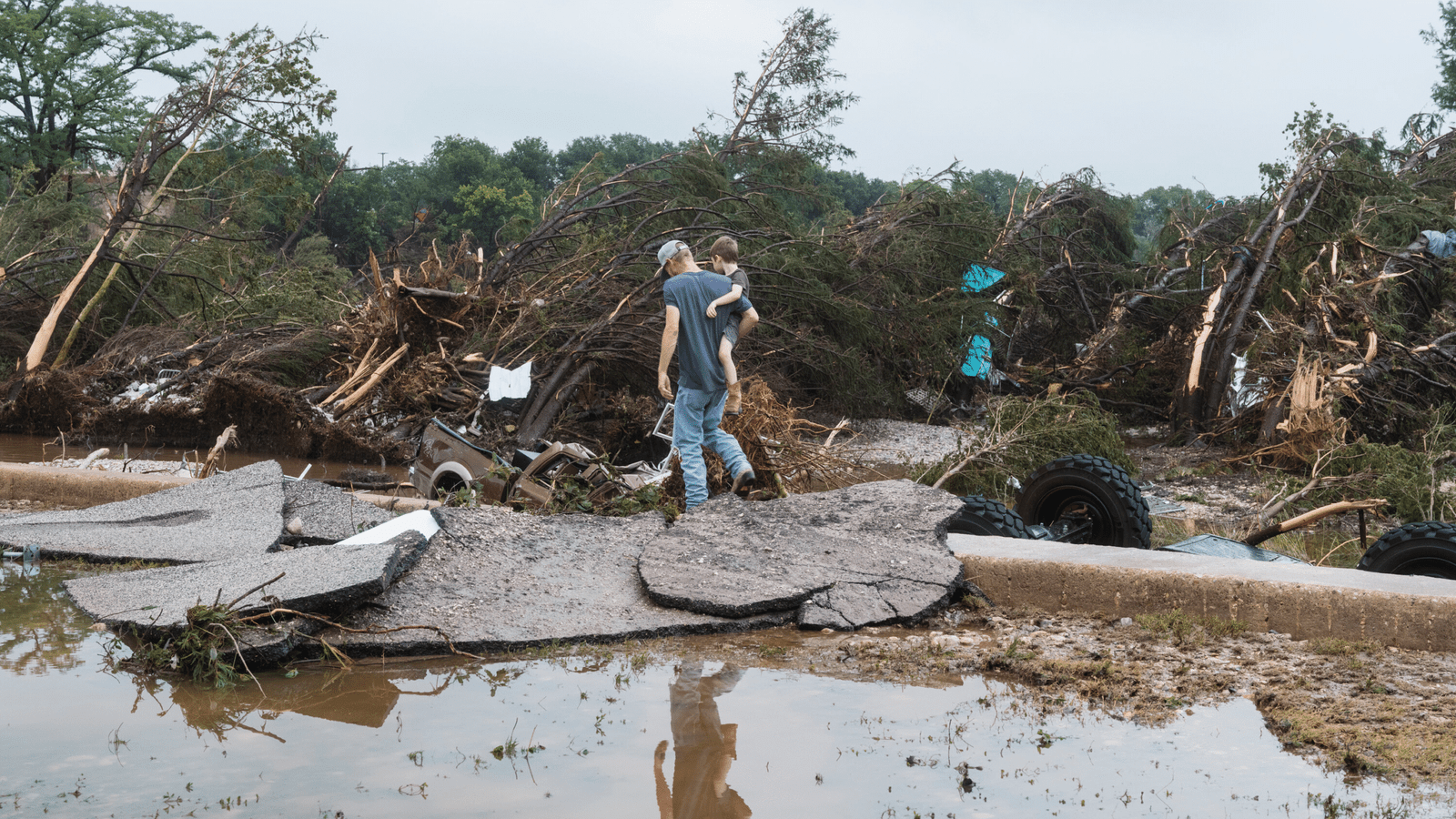Texas Flood Search Efforts Could Stretch for Months Amid Mud, Debris, and Murky Waters
Texas In the wake of the catastrophic July Fourth flooding along the Guadalupe River in central Texas, search and recovery teams are in a grueling race against time, terrain.
More than 1,000 local, state, and federal responders, along with thousands of volunteers from across the U.S., are engaged in an intense, coordinated search operation. The Unified Command at the Kerr County Emergency Operations Center reported that search teams are covering every inch from the Guadalupe River’s headwaters to Canyon Lake and back, focused on the heartbreaking task of finding and returning victims to their families.
Photos show rescue crews on hands and knees, combing through two-story-high mounds of wreckage where tree trunks are reduced to sticks. From manual sifting to deep dives, the operation is vast—and it’s far from over. Officials estimate the effort may continue for months, even years.
“A Long, Long Way to Go”
His crew is among those deployed to assist in Texas. “It’s going to be a slow, methodical process… to really provide the answers everyone’s looking for.”
So far, more than 130 lives have been lost in the disaster, but the majority of missing remain unaccounted for. Search crews work grueling 12-hour days, beginning at 7 a.m. and pausing briefly at noon before returning to the field. Joe Rigelsky, a founder of Upstream International—a Christian nonprofit helping in the effort—said meal prep is focused on high-protein and carb-loaded foods to keep the crews energized, with help from organizations like World Central Kitchen and Mercy Chefs.
Team leads, he noted, haven’t had a day off since arriving on July 4.
Emotional and Physical Toll
Volunteer Michael Guyer, who joined the search last week, described the toll it’s taking: “The burnout is real. Then someone else finds remains where you had just been. It eats at you.
Guyer said volunteers are often limited to basic tools like shovels and their sense of smell. “The digging is miserable—just mud, sand, and silt packed so tightly it takes hours to work through a small area.”
The “Suck Pile” and Draining Nimitz Lake
Authorities are even exploring the possibility of draining Nimitz Lake in Kerrville to aid in the search. The lake, swollen from continuous rain and now overtopping its dam, is so murky that divers can barely see a few inches ahead. Assistant City Manager Michael Hornes said draining it could make the lake bed accessible for recovery teams.

But doing so is complicated by saturated soil and potential upstream flooding. City, state, and federal engineers are working to design a safe plan that won’t worsen conditions elsewhere.
Meanwhile, back on dry land, many private properties are piled high with debris that search teams must examine before removal can begin. Officials have warned residents not to burn debris due to the possibility that human remains could be hidden within.
Precision and Persistence
Search teams have divided the entire area into lettered sections—Alpha through Lima—with each grid meticulously logged. That includes when it was searched, what techniques were used, and water levels at the time.
One particularly challenging section is what crews call the “suck pile”—a towering field of rock and debris deposited by the raging Guadalupe River. “We’ve even got areas that used to be pastureland that are now islands.”
“Looking, Smelling, Listening”
McQuarrie’s team follows a three-step process: primary searches, followed by secondary and then targeted efforts. Targets are marked digitally and often revisited with canine units and excavators. Dogs are especially crucial because human crews might overlook areas that haven’t yet begun to decompose and give off scent.
“It really has been a heavy dog-oriented search,” Rigelsky said. “Humans are only as effective as the dogs they work with.”
Photos posted by the Center Point Volunteer Fire Department show dogs, machine operators, and search crews working side-by-side, peeling away layers of debris along the 60-mile corridor, “layer by layer.”
Diving Into Blackwater
Once debris is cleared from riverbanks, divers descend into murky depths. Visibility is often nonexistent—searches are done entirely by feel. Dale Hammon, a blackwater diver with the group 300 Justice Road, described the task as “blind, by touch, and incredibly dangerous.”
For all involved, safety remains paramount. “We’re trying to manage two critical things—staying alive and being thorough,” McQuarrie said. “We don’t want to miss anything. Not one stone—literally or figuratively—should be left unturned.”
A Long Road Ahead
Retired Lt. Gen. Russel L. Honoré, who helped lead recovery efforts after Hurricane Katrina, said the work in Texas will take much longer than most realize. “In reality, we’ll be finding remains for months and years to come,” he said. “Six months after Katrina, we were still recovering people.”
The road to closure will be long and grueling, marked by mud-soaked boots, exhaustion, and heartbreak. But the commitment is unwavering. Every volunteer, every diver, every handler and rescuer continues to work toward one goal: bringing every missing person home.
